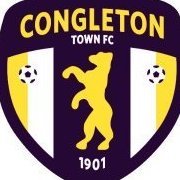Failed HDD data retrieval?
-
Recently Browsing 0 members
- No registered users viewing this page.
-
Topics
-
-
Popular Contributors
-
-
Latest posts...
-
29
THAILAND LIVE Thailand Live Saturday 19 July 2025
UAE Tourist Crashes Motorbike into Patong Pharmacy Picture courtesy of Khaosod. A 24-year-old tourist from the United Arab Emirates caused a dramatic scene in Patong on the afternoon of 18 July after crashing his motorcycle through the glass front of a local pharmacy. Full story:https://aseannow.com/topic/1367194-uae-tourist-crashes-motorbike-into-patong-pharmacy/ -
4
Indian Tourists Report Thai Escort to Police Over Small Breasts Dispute in Pattaya
As is often the case, getting the agreed upon payment, for agreed upon services, may not pan out. Funny folks Indians. -
3
Accident Man Killed by Train in Thailand: Locals Blame ‘Cemetery Ghost’
Let's call it stupidity. -
0
Accident UAE Tourist Crashes Motorbike into Patong Pharmacy
Picture courtesy of Khaosod. A 24-year-old tourist from the United Arab Emirates caused a dramatic scene in Patong on the afternoon of 18 July after crashing his motorcycle through the glass front of a local pharmacy. The incident occurred at approximately 15:05 at Earth Pharmacy, located in the heart of the bustling resort town. CCTV footage, later shared by the Newshawk Phuket Facebook page, captured the moment the motorbike suddenly surged forward while the rider was revving the engine, shattering the storefront and startling those nearby. A pharmacist on duty at the time said the man had been outside the shop with an Arab woman when the incident took place. “He was revving the bike quite aggressively, and then, without warning, it shot forward straight through the glass,” she recounted. “The woman immediately contacted the police.” Fortunately, no one inside the shop was injured, though the crash caused significant damage to the premises and shocked both staff and onlookers. The tourist, whose name was not disclosed, was treated at the scene for cuts from the glass, but didn’t want hospital treatment. Police responded swiftly to the scene and are investigating the incident. It remains unclear whether the tourist will face charges, but will be held liable for the cost of all repairs and damages. Adapted by Asean Now from Khaosod 2025-07-19- 1
-

-
4
IDF soldiers deliberately wounding children in Gaza ‘like a game’, says British doctor
Release the hostages and surrender.- 1
-

-
208
-
-
Popular in The Pub



.thumb.jpg.3ee24d9400fb02605ea21bc13b1bf901.jpg)
.thumb.jpeg.d2d19a66404642fd9ff62d6262fd153e.jpeg)









Recommended Posts
Create an account or sign in to comment
You need to be a member in order to leave a comment
Create an account
Sign up for a new account in our community. It's easy!
Register a new accountSign in
Already have an account? Sign in here.
Sign In Now